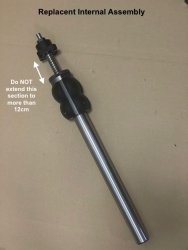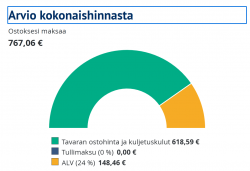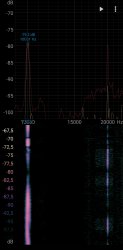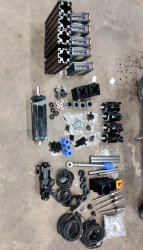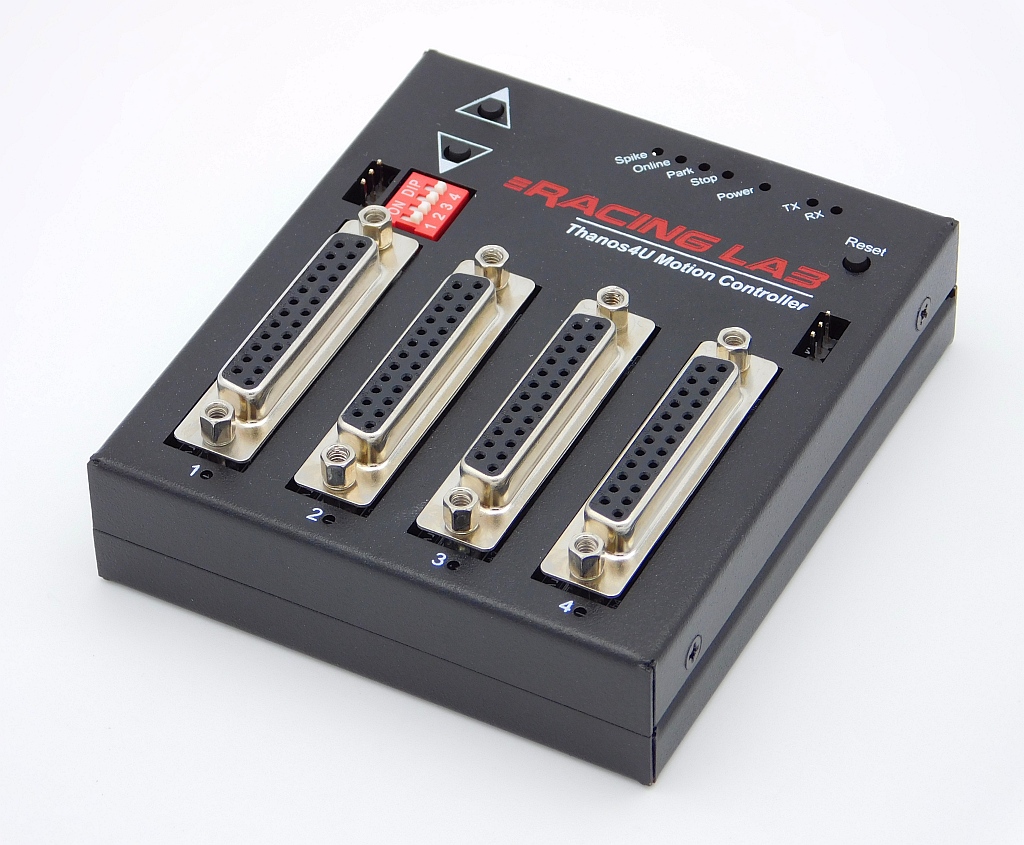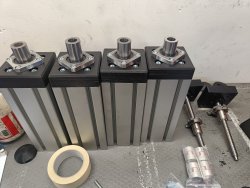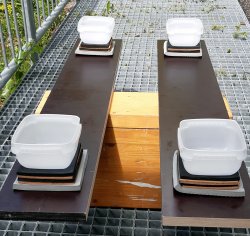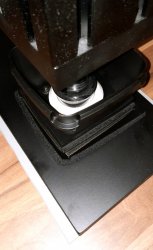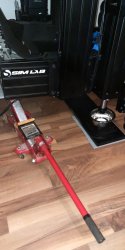Päivittämässä parempaan SimRigiin, tulee pääasiassa lentosimuihin.
Internetsien mukaan tähän soveltuu perus SFX-100 pakettia paremmin SFX-150 versio, joten sellainen on hankinnassa (vai suositeletteko jotain muuta tuotetta?)
@Make73
@Zarniwoop
Olisiko kommenttia mitkä osat poikkeavat vakiosta SFX100 kokoonpanosta? Tai mitä osia Kittiin suosittelette?
- replace the sfx-100 parts to sfx-150.
These parts will have to be extended to 300mm:
- 100x100 profiles
Aluminum profile 100*100
- ballscrews
- hollow shafts
Ymmärtääkseni 150mm versio edellyttää tämän hankintaa:
Thanos
Thanos outlined the advantages, which are:
1) The Thanos controller has built-in safety. It auto-calibrates each actuator on startup, and knows the absolute position of each. Unlike the Arduino, Thano's controller ensures the sliders won't be driven into the ends of the actuator. This has happened on SFX-100 builds, and has broken parts.
2) You can set actuator stroke as part of setup. SFX actuators are capable of 110 mm, which I'm using on my setup. The Aruduino build is currently hard-coded to 100mm.
3) Thano's controller uses Simtools. This software is extremely flexible, with many tuning options. There's a large community supporting this (see XSimulator.net). Simtools is also open source, unlike the restricted software on the standard SFX-100 build. There is a learning curve with Simtools, and not many SFX-100 users have adopted it, but as more do, we'll have more and more tuned profiles to share. If anyone wants my AC and PC2 profiles, let me know.
4) Thano's controller is truly plug n play. No wiring. You just hook up to your PC via USB, and your controllers via DB25 and you're working. It also has independent test capability built-in, so you can test your SFX setup during the build without the need to hook up or download anything to your PC.
5) Thanos controller has a lovely 2-line LCD display, that let's you know if you're online, recieving data, etc. In addition, it has easy-to-use controls, including a button "pad" and 2-way dial/enter button. Super-helpful for setup and testing. He also has a fantastic 3D printed case, to fit his controller; STL files are avilable from his github.
6) Thano's programmed his controllers in assembly language, and capable of very fast updates to the motors. This is good for capturing very fine details, etc. The "tactile" sense I get from his controller is uncanny, much like the fast updates on a DD wheel.
7) Thanos controller supports up to 7 axis, with 6 ready-to-go right on the board. If you want to add traction loss or a seabelt tensioner, it's all ready for this, including Simtools support for these functions. Alternately, you could use 2 extra axis for a seat-mover in addition to the SFX actuators. I've done my SFX setup with my older NLR v3 motion chair, and the combination is fantastic. I know folks have said they prefer SFX w/o the chair, but my extensive testing has shown the chair is a nice addition, handling surge and sway very realistically with a greater range of motion than the SFX can provide to these forces.
---------------
And to be fair, there's a few disadvantages. They are:
1) Cost. Using his controller is more expensive than the standard SFX-100 build, expect to pay about $150-200 more compared to the Arduino builds.
2) Setup. This really isn't a disadvantage, just a different setup process. Thanos has a dedicated Discord channel to help, and now that a few of us have successfully implemented his controller, there's a growing body of users to help new folks through this process. Like all DIY hardware/software combos, there's several very specific drivers, apps, and others things you need to locate and install to get it all running.
3)Current lack of tuned profiles for many sims. As we're in the very early days of use of Thanos' controller with SFX builds, there's many titles we haven't tuned Simtools for. This will change as more folks start using his controller.
--------------
Finally, I'll simply state the Thano's controller has worked flawlessly with my SFX build for well over about 40 hours of use in the last month. It's been rock solid, and the display provides a constant update on the status of my system. Highly, highly recommended.
Lisäksi:
There are even more features, like automatic Park when there is no motion data present, automatic smooth move to standby position as soon motion data are available, emergency switch along manual move button for moving between park or standby position and there is even a Force Offline switch to literally pause the motion without having to stop the motion software or the game
Regarding No2 disadvantage, its not disadvantage at all, its actually freedom to setup your platform with what you are comfortable with and with motion that matches better your setup. For example people with flight sims might want more smooth and large motions with less vibrations. Others want to have both large motions and angles combined with vibrations for racing with screen mounted on the rig. Others might want just small sharp movements with lots vibration, that works better with VR head displays...

